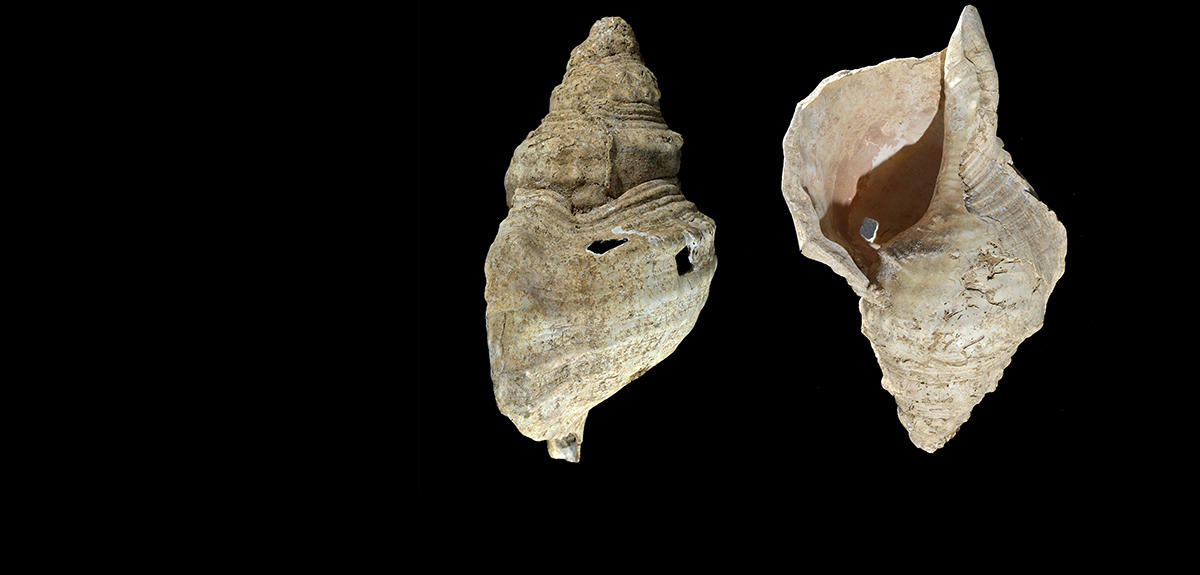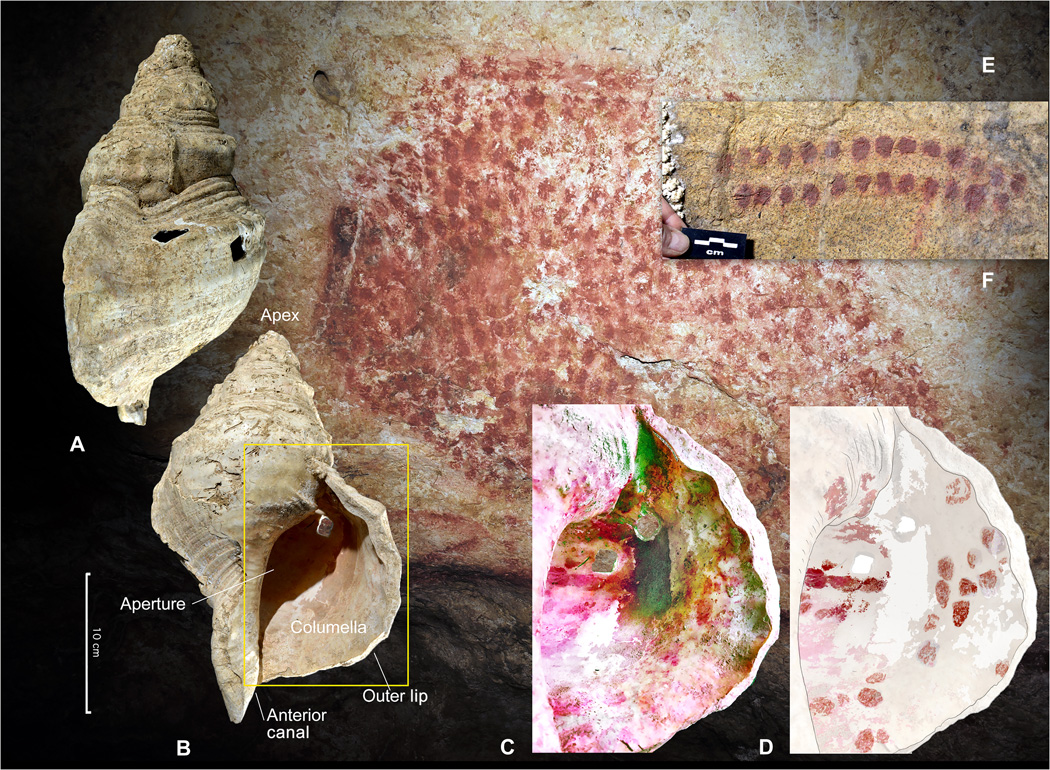Sounds from 17 thousand years ago

The shell of Charonia lampas recovered from Marsoulas Cave. Credit: C. Fritz, Musée d'Histoire naturelle de Toulouse
In 1931, two archaeologists, H. Bégouën and J. T. Russell, working in southern France, unearthed a large seashell at the entrance to Marsoulas cave (Haute-Garonne), an ancient site famous for its Paleolithic wall paintings of bison, horses, humans and incredible geometric patterns. The “exceptional discovery” was identified as a “loving-cup” (ceremonial goblet) dating back to the early Magdelenean civilisation of the Dordogne region, and the conch shell found its way into the collections of the Natural History Museum in Toulouse... where it stayed for 80 years.
Last year, a team analyzed the 30 cm-long conch shell using modern imaging technology.


(A) Side view. (B) Front view and naming of the anatomical areas. (C) Vestiges of red pigment preserved on the columella (image enhanced with Dstretch-rgb0). (D) Tracing of red dots and lines visible on the enhanced photo. Very similar red dots, produced with the fingertips, are present on the walls of the cave. (5) Set of red dots forming a bison silhouette (length, 1.10 m). (6) Geometric sign formed by a double line of dots.
Their report, published in February 2021, concluded that the shell had been deliberately chipped and punctured to turn it into a musical instrument - a charonia. In fact this is an extremely rare example of a “seashell horn” from the Paleolithic period, decorated with the same pattern of dots found on the walls of Marsoulas Cave. And it still works!
Listen to the seashell horn... a sound that last resonated 17-18 thousand years ago.
Notes played on the ancient conch shell were almost perfect equivalents of modern C, C-sharp, and D.
Want to know more?
- Full report; C. Fritz et al. First record of the sound produced by the oldest Upper Paleolithic seashell horn, Research in Anthropology, Science Advances, 10 Feb 2021: Vol. 7, no. 7, eabe9510.
- CNRS Journal report (10/02/2021) in French.
- Secondary source in English from the New York Times Science Supplement